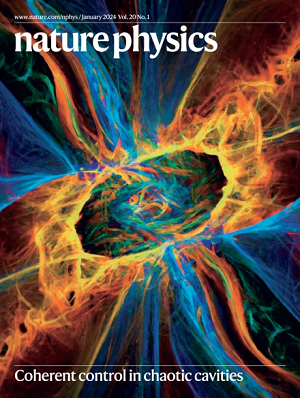Observation of magnetic islands in tokamak plasmas during the suppression of edge-localized modes
IF 17.6
1区 物理与天体物理
Q1 PHYSICS, MULTIDISCIPLINARY
引用次数: 0
Abstract
In tokamaks, a leading platform for fusion energy, periodic filamentary plasma eruptions known as edge-localized modes occur in plasmas with high-energy confinement and steep pressure profiles at the plasma edge. These edge-localized modes could damage the tokamak wall but can be suppressed using small three-dimensional magnetic perturbations. Here we demonstrate that these magnetic perturbations can change the magnetic topology just inside the steep gradient region of the plasma edge. We identify signatures of a magnetic island, and their observation is linked to the suppression of edge-localized modes. We compare high-resolution measurements of perturbed magnetic surfaces with predictions from ideal magnetohydrodynamic theory where the magnetic topology is preserved. Although ideal magnetohydrodynamics adequately describes the measurements in plasmas exhibiting edge-localized modes, it proves insufficient for plasmas where these modes are suppressed. Nonlinear resistive magnetohydrodynamic modelling supports this observation. Our study experimentally confirms the predicted role of magnetic islands in inhibiting the occurrence of edge-localized modes. This will be beneficial for physics-based predictions in future fusion devices to control these modes. The suppression of edge-localized modes in tokamak plasmas is crucial to prevent them from damaging the walls of the chamber. Now experiments confirm the role that magnetic islands play in suppressing these detrimental modes.


边缘定位模式抑制期间托卡马克等离子体中的磁岛观测
托卡马克是聚变能的主要平台,在具有高能约束和等离子体边缘陡峭压力剖面的等离子体中,会出现被称为边缘定位模式的周期性丝状等离子体喷发。这些边缘定位模式可能会损坏托卡马克壁,但可以利用小型三维磁扰动加以抑制。在这里,我们证明这些磁扰动可以改变等离子体边缘陡峭梯度区域内的磁拓扑结构。我们发现了磁岛的特征,其观测与边缘定位模式的抑制有关。我们将扰动磁场表面的高分辨率测量结果与理想磁流体力学理论的预测结果进行了比较,在理想磁流体力学理论中,磁场拓扑结构得以保留。虽然理想磁流体力学能充分描述表现出边缘定位模式的等离子体中的测量结果,但对于这些模式被抑制的等离子体,理想磁流体力学却证明是不够的。非线性电阻磁流体动力学模型支持这一观察结果。我们的研究从实验上证实了预测的磁岛在抑制边缘定位模式发生方面的作用。这将有利于在未来的聚变设备中进行基于物理学的预测,以控制这些模式。
本文章由计算机程序翻译,如有差异,请以英文原文为准。
求助全文
约1分钟内获得全文
求助全文
来源期刊

Nature Physics
物理-物理:综合
CiteScore
30.40
自引率
2.00%
发文量
349
审稿时长
4-8 weeks
期刊介绍:
Nature Physics is dedicated to publishing top-tier original research in physics with a fair and rigorous review process. It provides high visibility and access to a broad readership, maintaining high standards in copy editing and production, ensuring rapid publication, and maintaining independence from academic societies and other vested interests.
The journal presents two main research paper formats: Letters and Articles. Alongside primary research, Nature Physics serves as a central source for valuable information within the physics community through Review Articles, News & Views, Research Highlights covering crucial developments across the physics literature, Commentaries, Book Reviews, and Correspondence.
 求助内容:
求助内容: 应助结果提醒方式:
应助结果提醒方式:


